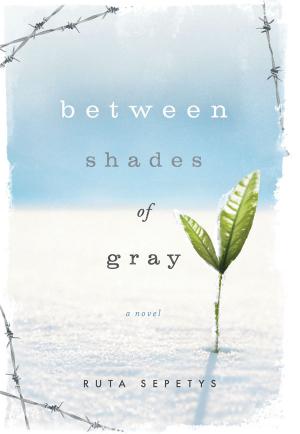
 Ruta Sepetys's stunning debut novel begins on June 14, 1941, as the NKVD (the Soviet secret police) pound on the door of the Vilkas family's home. Fifteen-year-old Lina Vilkas, who narrates, and her 11-year-old brother, Jonas, race around the house when their mother tells them to fill just one suitcase. Their professor father is missing. "Davai!" ("Hurry!") commands an NKVD officer, a refrain that will torment them through the years ahead. Lina, Jonas and their mother begin a journey by truck, cattle car and barge to work camps across Russia--a journey that ultimately takes them all the way to Trofimovsk at the North Pole. A map in the front of the book charts their route.
Ruta Sepetys's stunning debut novel begins on June 14, 1941, as the NKVD (the Soviet secret police) pound on the door of the Vilkas family's home. Fifteen-year-old Lina Vilkas, who narrates, and her 11-year-old brother, Jonas, race around the house when their mother tells them to fill just one suitcase. Their professor father is missing. "Davai!" ("Hurry!") commands an NKVD officer, a refrain that will torment them through the years ahead. Lina, Jonas and their mother begin a journey by truck, cattle car and barge to work camps across Russia--a journey that ultimately takes them all the way to Trofimovsk at the North Pole. A map in the front of the book charts their route.
Sepetys tells a parallel story to Esther Hautzig's memoir, The Endless Steppe (1968), which also begins in June 1941. The daughter of Lithuanian refugees, Sepetys bases her fiction on research and follows one family to tell of Stalin's ethnic cleansing of the Lithuanians, Latvians and Estonians just before Hitler's invasion of Russia. Through flashbacks, Lina recalls meetings that her father held at their house with likeminded men who were concerned about Stalin's rise and Hitler's actions in Europe. The author makes palpable the stench and crowding in the cattle cars on the first long leg of their journey, with only one opening in the side of the car for urination and defecation--and the sole source for air. She gives each of the travelers a clear personality. And although each gets a name, Lina more frequently refers to them by a specific trait--the man who constantly winds his watch, Mr. Lukas, for instance, and Mr. Salas, the gloom-and-doom "bald man," as Lina refers to him. Lina's artwork keeps her spirits up during this time--she draws on anything she can find, and her admiration of Edvard Munch gives her insights into her horrific circumstances (she recalls his words, "Paint it as you see it. Even if it's a sunny day but you see darkness and shadows"). At one stop, Lina, Jonas and a gutsy 17-year-old boy named Andrius Arvydas risk their lives to search for their fathers on another stopped train, rumored to be filled with men. Lina does find her father, who hints at a way that Lina can stay in touch with him. Papa tells Lina, "You can help me find you.... I'll know it's you... just like you know Munch." So Lina begins to pass along messages through her artwork to people she meets during transport, hoping to get word back to her father.
The author does not shy away from the atrocities the Vilkas family witnesses as the officers round up Lithuanians on their "list" and treat them like "pigs." They stop at a hospital and take a woman and her baby, born just moments before. Neither of them survives. Mothers sacrifice their food and their dignity to keep their children alive. The author explores the consequences of diverse personalities forced into close quarters and attempting to survive. Still, there is hope: Lina's family is stronger for their ability to work together, and Lina's mother emerges as a leader, one of the few who knows Russian and shows compassion to even the most trying people in their midst. And Lina, seeing the world through an artist's eyes, experiences moments of contentment in the feel of the sun and the smell of new grass. She also finds love: "How did I get here? How did I end up in the arms of a boy I barely knew, but knew I didn't want to lose?" Sepetys shares a seldom-told story of the more than 20 million people who died during Stalin's reign of terror, a secret kept for nearly 50 years under penalty of imprisonment or repeat deportation. By personalizing the experience of these millions through the eyes of a few, Sepetys demonstrates how courage and hope can keep people going under the worst of circumstances.--Jennifer M. Brown

